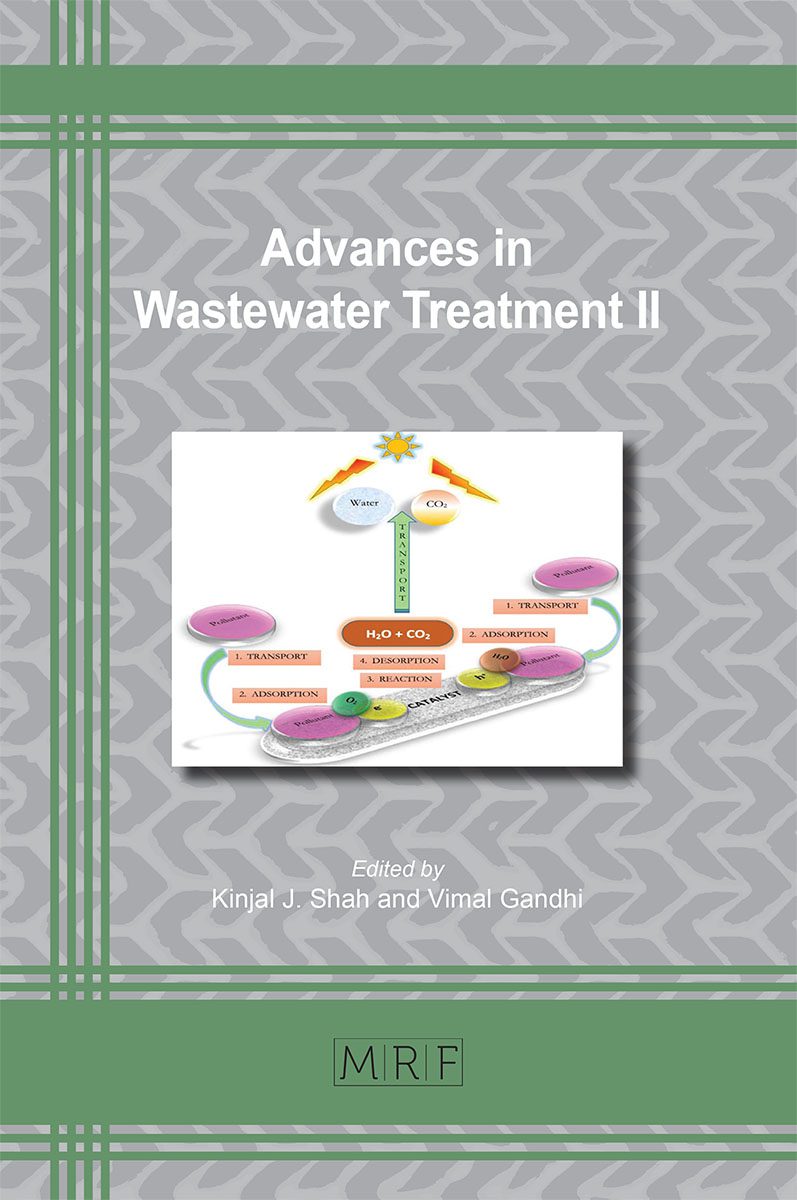A Statistical Approach to Model Selection for Dynamic Adsorption Columns
Paul Musonge, Manqoba Shezi
A variety of models have been used to describe and predict breakthrough curves for dynamic adsorption systems, in order to scale up laboratory and pilot plant systems. There are however limitations in the applicability of existing models. The study is aimed at providing unambiguous approaches in selecting the best performing model between Thomas, Yoon-Nelson and Bohart-Adams (B-A) models for three dynamic adsorption systems. Three approaches were implemented in this study using published experimental data of three adsorption systems. The first approach was the application of statistical analysis between actual and predicted breakthrough curves without modifying the models. The second and third approaches were application of local mean values (LMV) and global mean values (GMV) of empirical constants to predict breakthrough curves. Predictive and generalization performances of the three models were evaluated using the statistical criteria of Mean Absolute Error (MAE), Root mean Squared Error (RMSE) and Correlation Coefficient (R2).
Keywords
Acid Mine Drainage, Adsorption, Yoon-Nelson Model, Thomas Model, B-A Model
Published online 5/1/2021, 40 pages
Citation: Paul Musonge, Manqoba Shezi, A Statistical Approach to Model Selection for Dynamic Adsorption Columns, Materials Research Foundations, Vol. 102, pp 128-167, 2021
DOI: https://doi.org/10.21741/9781644901397-5
Part of the book on Advances in Wastewater Treatment II
References
[1] Kefeni, K. K., Msagati, T. A. and Mamba, B. B. 2017. Acid mine drainage: prevention, treatment options, and resource recovery: a review. Journal of Cleaner Production, 151: 475-493. https://doi.org/10.1016/j.jclepro.2017.03.082
[2] Nleya, Y., Simate, G. S. and Ndlovu, S. 2016. Sustainability assessment of the recovery and utilisation of acid from acid mine drainage. Journal of Cleaner Production, 113: 17-27. https://doi.org/10.1016/j.jclepro.2015.11.005
[3] Ali, I. 2014. Water treatment by adsorption columns: evaluation at ground level. Separation & Purification Reviews, 43 (3): 175-205. https://doi.org/10.1080/15422119.2012.748671
[4] Podstawczyk, D., Witek-Krowiak, A., Dawiec, A. and Bhatnagar, A. 2015. Biosorption of copper (II) ions by flax meal: Empirical modeling and process optimization by response surface methodology (RSM) and artificial neural network (ANN) simulation. Ecological Engineering, 83: 364-379. https://doi.org/10.1016/j.ecoleng.2015.07.004
[5] Xu, Z., Cai, J.-g. and Pan, B.-c. 2013. Mathematically modeling fixed-bed adsorption in aqueous systems. Journal of Zhejiang University SCIENCE A, 14 (3): 155-176. https://doi.org/10.1631/jzus.A1300029
[6] Calero, M., Hernáinz, F., Blázquez, G., Tenorio, G. and Martín-Lara, M. 2009. Study of Cr (III) biosorption in a fixed-bed column. Journal of hazardous materials, 171 (1-3): 886-893. https://doi.org/10.1016/j.jhazmat.2009.06.082
[7] Turan, N. G., Mesci, B. and Ozgonenel, O. 2011a. Artificial neural network (ANN) approach for modeling Zn (II) adsorption from leachate using a new biosorbent. Chemical Engineering Journal, 173 (1): 98-105. https://doi.org/10.1016/j.cej.2011.07.042
[8] Oguz, E. and Ersoy, M. 2010b. Removal of Cu 2+ from aqueous solution by adsorption in a fixed bed column and Neural Network Modelling. Chemical Engineering Journal, 164 (1): 56-62. https://doi.org/10.1016/j.cej.2010.08.016
[9] Kumar, D., Pandey, L. K. and Gaur, J. 2016. Metal sorption by algal biomass: From batch to continuous system. Algal research, 18: 95-109. https://doi.org/10.1016/j.algal.2016.05.026
[10] Geankoplis, C. J. 2003. Transport processes and separation process principles:(includes unit operations). Prentice Hall Professional Technical Reference.
[11] Bohart, G. and Adams, E. 1920. Some aspects of the behavior of charcoal with respect to chlorine. Journal of the American Chemical Society, 42 (3): 523-544. https://doi.org/10.1021/ja01448a018
[12] Chu, K. H. 2010. Fixed bed sorption: setting the record straight on the Bohart–Adams and Thomas models. Journal of hazardous materials, 177 (1-3): 1006-1012. https://doi.org/10.1016/j.jhazmat.2010.01.019
[13] Hutchins, R. 1973. New method simplifies design of activated-carbon systems. Chemical Engineering, 80 (19): 133-138.
[14] Ahmad, A. and Hameed, B. 2010. Fixed-bed adsorption of reactive azo dye onto granular activated carbon prepared from waste. Journal of hazardous materials, 175 (1): 298-303. https://doi.org/10.1016/j.jhazmat.2009.10.003
[15] Han, R., Wang, Y., Zhao, X., Wang, Y., Xie, F., Cheng, J. and Tang, M. 2009. Adsorption of methylene blue by phoenix tree leaf powder in a fixed-bed column: experiments and prediction of breakthrough curves. Desalination, 245 (1-3): 284-297. https://doi.org/10.1016/j.desal.2008.07.013
[16] Thomas, H. C. 1944. Heterogeneous ion exchange in a flowing system. Journal of the American Chemical Society, 66 (10): 1664-1666. https://doi.org/10.1021/ja01238a017
[17] Yoon, Y. H. and Nelson, J. H. 1984. Application of gas adsorption kinetics I. A theoretical model for respirator cartridge service life. The American Industrial Hygiene Association Journal, 45 (8): 509-516. https://doi.org/10.1080/15298668491400197
[18] Masukume, M., Onyango, M. S. and Maree, J. P. 2014. Sea shell derived adsorbent and its potential for treating acid mine drainage. International Journal of Mineral Processing, 133: 52-59. https://doi.org/10.1016/j.minpro.2014.09.005
[19] Biswas, S. and Mishra, U. 2015. Continuous fixed-bed column study and adsorption modeling: Removal of lead ion from aqueous solution by charcoal originated from chemical carbonization of rubber wood sawdust. Journal of Chemistry, 2015. https://doi.org/10.1155/2015/907379
[20] Long, R. A. 2010. Continuous fixed-bed column study and adsorption modeling: Removal of lead ion from aqueous solution by Agirus Bisporus. Journal of Biomedical Materials Research Part A, 103 (3): 949-958.
































